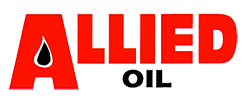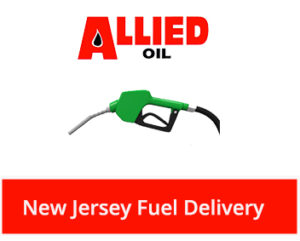NEW JERSEY UST REGULATIONS UPDATE 3-6-2018
FOR OWNERS & OPERATORS IN NEW JERSEY
The rules & regulations for the operation of UST’s are changing.
Operators are required to be compliant with the federal regulations as detailed in the USEPA Final UST Rule as of October 2018. The state of New Jersey is in the process of updating their regulations regarding regulated UST’s.
ALLIED OIL will attempt to collect & share information about these new regulations on this website for our customers.
Fuel delivery companies are already required to ensure that all deliveries for regulated USTs are made to registered and compliant tanks. Delivering to a non-registered tank is a violation punishable by a fine of up to $15,000.
As of October 2018, a UST facility’s failure to have licensed A/B operators listed on their UST facility registration will cause the registration to be deemed incomplete, and the facility will be considered non-compliant. As a result, Allied Oil will not be able to deliver fuel to these facilities. These new regulations also require the UST owner/operator to have an A, B, or C Operator on-site whenever product is delivered or dispensed.
This memo is a discussion of regulated USTs in NJ, including; all bulk plants, motor fuel tanks, and non-residential heating oil tanks with volumes 2,001 gallons and greater.
As of October 2018, all NJ operators of federally regulated USTs must be in compliance with the USEPA Final UST Rule. Compliance must be met in the following important areas:
1. You must have designated, properly trained and tested individuals as the Class A, Class B and Class C operators for your site.
2. You are required to have UST systems and components inspected on a monthly basis, annual basis, and triennial basis.
Operator Training
Operator training is intended to make sure that the people who own and operate regulated UST facilities understand the rules, the financial responsibility requirements, the UST system’s design and operation, the specific requirements for release detection, the release response plan, and release reporting. The premise is that releases will be prevented when facilities designate individuals to be responsible for the operation of the regulated USTs.
The operator training program establishes three tiers of operator; Class A, Class B, and Class C.
The Class A operator has overall responsibility for the UST facility. This may be the facility owner or a corporate facilities director. The Class A operator needs to understand the key components of compliance, the required specifications for a compliant UST system, a general knowledge of the systems in use, the financial responsibility aspects, and the regulations governing USTs.
The Class B Operator is the individual with direct knowledge of the UST system specific to the facility or location. The Class B Operator has direct knowledge of the tank construction, the piping system construction and operation, the method of release detection in use, the compliance inspections required, the status of the system, and the results of those compliance inspections. The Class B Operator would typically initiate investigations in response to alarms or deficiencies, and contract for mandated inspections and required maintenance or repairs.
The Class C operator is on site whenever fuel is being dispensed and, with the exception of unmanned facilities, delivered. This individual needs to have a thorough understanding of the procedures outlined in the release response plan, and must be trained to respond to system alarms, spills and operational issues that may occur. Certification of the Class C operator can be done in-house, with the Class A or Class B operator providing the necessary training and maintaining of records for the individuals being trained.
In New Jersey, in order to be certified as a Class A or B operator, an individual must complete a course presented by the NJDEP, and then pass an exam (see links at bottom to sign up for these classes, and the schedule testing). The NJDEP course is a combined Class A/B Operator course, which covers the requirements for both classes of operator. The course is offered through Rutgers at $295.
Walkthrough Inspections
The walkthrough inspection requirement is intended to regiment the process of checking the facility equipment periodically for functionality, and to visually check if there are any potential areas for releases to occur or there are any actual releases. Early detection of problems minimizes the cost of repairs and the cost of cleanup if a leak or spill occurs.
The USEPA Final UST Rule established that federally regulated USTs must have a facility inspection program fully operational by October 2018. FMA anticipates that the NJDEP regulations will generally mirror the federal requirements. Owners and operators of regulated USTs are encouraged to proactively begin the inspection process.
Walkthrough inspections are to be conducted monthly. Records of the inspections shall be maintained at the facility. The records need to include the date of inspection, the components inspected, and the individual who conducted the inspection. Inspections can be conducted in accordance with PEI RP 900 and RP 1200, or in conformance with the minimum requirements enumerated in the rules.
On an annual basis, the inspection is more detailed and may need to be supplemented by tests of piping and line leak detectors
The triennial inspection needs to include testing of containment sumps used for interstitial monitoring and testing of the overfill prevention system. Again, retention of detailed records of the inspections is required.
NJ has proposed the following minimum inspection protocol:
Monthly
Release Detection:
- Check Systems for Alarms
- Keep records of tests performed and response to alarms Check for unusual conditions
Pre Delivery
Spill Prevention
- Check Spill containment for integrity, debris and water
- If double wall, check between walls
- Check fill cap and gasket, check fill for obstructions
Pipes, pumps and check submersible pump and piping connections if not dispensers contained
- Open and check dispensers and soil beneath if no dispenser sumps
60 Day
Impressed Current
- Inspect rectifier, verify power is on, record voltage & Cathodic Protection amperage readings
Annual:
Release Detection:
- Test alarm, verify configuration, test battery
- Inspect floats and sensors, ensure shafts not damaged
- Inspect cables and connections
- Verify alarm communication and operation
UST System
- Open and inspect containment sumps, remove water and debris
- If double wall sump, check interstice
- Open dispensers and inspect for leaks and check under dispenser containment
Piping
- Test single wall pressurized piping Test Line Leak Detector
Triennial:
Spill Containment
- Test Spill Containment catch basin
Sumps
- Test Containment Sumps used for interstitial monitoring
Overfill
- Inspect overfill prevention system
The USEPA Final UST rule was effective in October 2015, and it requires all facilities to be fully compliant with the inspection regiment by October 2018. That includes the triennial inspection components of testing spill containment, testing sumps and inspection overfill equipment.
NOTES: The NJDEP will continue inspecting regulated UST facilities and the NJDEP’s enforcement personnel will be verifying compliance with the USEPA Final UST rule. Both the NJDEP and the regulated community are concerned that it may be a challenge for all regulated facilities to meet the compliance deadline. The NJDEP has indicated the deadline for the testing of containment sumps cannot be extended. Containment sumps for the interstitial monitoring of piping systems have been required for new NJ UST installations since 1990 unless the owner had filed an installation permit with the NJDEP and the permit was approved. Therefore, unless the piping system is “European suction”, testing of the existing piping containment sump will be required regardless of the current form of piping release detection in use at a facility.
If a regulated UST facility should elect to replace the containment sump, it must be tested at installation. However, the NJDEP realizes that many mechanical factors could contribute to an existing containment sump not passing a test and that repairs can take time. The NJDEP is requiring the test be completed, but the NJDEP is considering acceptance of alternate means of release detection for piping while repairs to existing containment systems are made.
It is important the regulated UST community understand that the testing of sumps is mandated for sumps utilized for interstitial monitoring of secondarily contained piping. For facilities that have under dispenser containment, the sumps are most often not used for interstitial monitoring of the piping. These sumps do not need testing.
It is also expected the NJDEP will accept a low level test protocol for sumps provided the facility also employ positive pump shutdown. Positive pump shut down disables the pump when the interstitial sensor detects a liquid accumulation in the sump. This can reduce the costs of compliance with the testing requirement and eliminate encountering problems with potential leaks at sump penetrations.
Spill Containment catch basins are also subject to the testing deadline. Again, facilities can elect to proceed with replacement of the spill containment catch basins rather than test older equipment. The NJDEP requires a limited release investigation be conducted when the spill catchment basin is replaced. Operators must retain the record of the investigation and the new spill bucket must be tested on installation. Documentation will be required when a facility inspection is conducted by the NJDEP. Problems with inspection of overfill equipment have been encountered when the shut off drop tubes are “frozen” in place and cannot be extracted from the fill pipe. In these cases, it may be less costly to add a high level alarm (visual and audible, visible to the driver when filling the UST) as a supplemental means of overfill protection instead of excavation to the tank top to remove the fill pipe and replace the shut off drop tube.
Owners of regulated USTs are encouraged to begin commencement of their compliance plan for these inspections. The availability of qualified and reputable testing contractors and repair contractors will only lessen as the compliance date approaches. Any facility that has completed the testing since 2016 does not need to worry about repeating the tests until the three year inspection anniversary.
OPERATOR CLASS REGISTRATION:
http://www.cpe.rutgers.edu/brochures/intros/ust-AB.html
The exam is administered by ICC and can be taken at Pearson Vue testing centers. www.pearsonvue.com/es/locate/ . The cost of the exam is $80. More information on the exam can be found at: http://www.nj.gov/dep/enforcement/ust.html
Thank you to the Fuel Merchants Association of New Jersey for all their invaluable work and guidance on this very important issue.
[maxbutton id=”2″ ] [maxbutton id=”4″ ] [maxbutton id=”3″ ]

